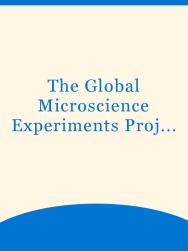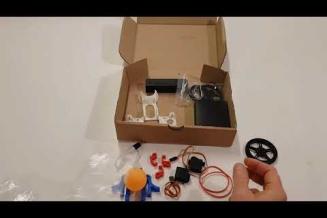Science, Technology, Engineering and Mathematics (STEM)
Building capacity in Science, Technology, Engineering and Mathematics (STEM), especially in Africa and from a gender perspective, is crucial to transform knowledge into resilience ownership to promote sustainable development.
Global Microscience Experiments
The Global Microscience Experiments Project is a hands-on science education project that gives primary and secondary school pupils (and in some countries, university students as well) the opportunity to conduct practical work in physics, chemistry and biology, using kits that come with booklets describing possible scientific experiments.
These kits are veritable mini-laboratories. They are cost effective and safe, in so far as pupils never need to use more than a couple of drops of chemicals for each experiment. The kits are also affordable and far cheaper than conventional laboratory equipment and materials. Each kit is compact, can be reused and is very resistant. In addition, the small quantities of chemicals used make the methodology environmentally sound.
The pedagogical importance of this practical science education tool for capacity building in scientific thinking is high. Pupils learn to ask questions about the natural world, to set up experiment to answer their questions, to observe and record results, and then to draw conclusions. This methodology can be used to teach scientific thinking in contexts where no laboratory facilities are available. The microscience approach not only helps to develop scientific thinking in students but also provides developed and developing countries alike with new teaching tools.




Advanced learning packages
See also: manual for learners

Advanced teaching and learning packages
See also:

CogLabs project
To inspire the next generation of thinkers and makers with accessible, hands-on robotics and machine learning experiences, UNESCO and Google co-launched this project to use educational tools and recycle old smartphones to provide solutions for scientific learning (One Tool+One Problem=One Solution).
Coglabs is a web platform designed to help kids and educators design, build, and programme a smartphone powered robot. It brings together simple block-style coding from Scratch, with the Teachable Machine platform so kids can use off the shelf TF models like Posenet and Object detection, or even train their own models. By designing and building a robot with 3D printed parts and a second-hand phone, training your robot to recognise images, sounds and poses, the robot can respond and perform simple tasks as programmed.

3D printer
3D printing is a strong tool that is used to help participants to improve the capacity building in science and engineering in a self-sustained way. 3D printer empowers the students to design their own robots and take ownership of the Cog Labs project. The project provides a detailed how-to video to guide the users including five steps..
If students have access to 3D printers, they can design the robot's body by tinkering the shape and/or changing the color of the parts to personalize their robots. In addition, it ignites students' creativity in their own robot design using a CAD app, such as Tinkercad, and 3D print the parts.
If students have no access to 3D printers or prefer working with craft materials, they can use cardboard or cardboard boxes with crayons, yarns, origami papers, paint, or papier-mache ́to create a robot’s body.






